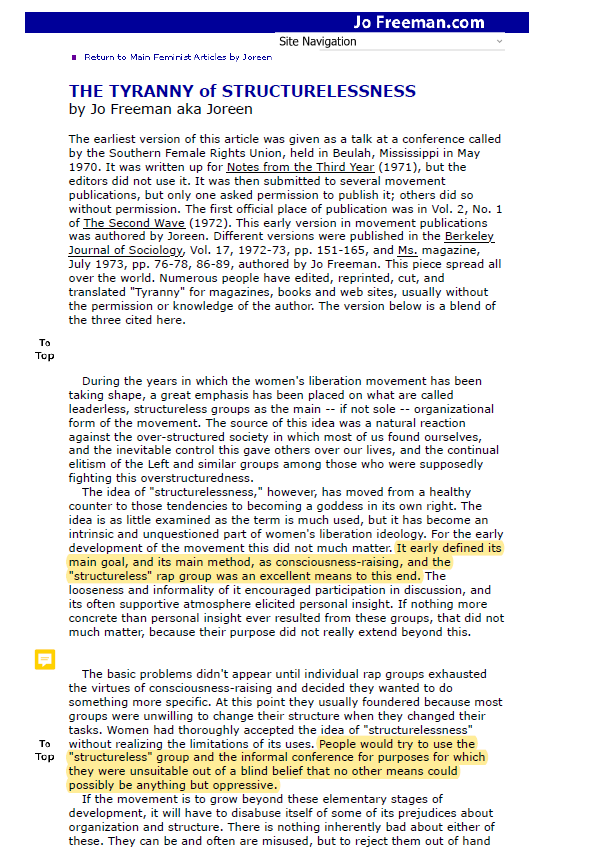Critics Link 'Great Feminization' to 'Tyranny of Structurelessness' in Organizations

Social commentator J.D. Haltigan, PhD, recently sparked discussion on social media by linking the concept of "the great feminization" within institutions to Jo Freeman's influential essay, "The Tyranny of Structurelessness." Haltigan's tweet suggests that the increasing feminization of organizations leads to a lack of formal structure, which in turn fosters unaccountable informal power dynamics.
"Everyone all the sudden 'talking about the great feminization.' Lmfao. Where have you been people? @herandrews has been noting it for some time as have others. It is a 'tyranny of structurelessness' which is what you get when the entire organization or institution becomes feminized. This seminal essay by Jo Freeman describes it," Haltigan stated in his post.
The term "feminization" in sociology refers to a shift in gender roles and the incorporation of women into previously male-dominated professions. Proponents of "the great feminization" thesis, such as Helen Andrews, argue that as women become a majority in various institutions, these organizations adopt what they perceive as feminine patterns of behavior, prioritizing empathy over rationality and cohesion over competition. This perspective suggests a potential shift in institutional culture and decision-making processes.
Jo Freeman's "The Tyranny of Structurelessness," published in 1972, critiques the idea of leaderless, informal groups within the women's liberation movement. Freeman argued that a lack of formal structure does not eliminate power dynamics but rather masks them, leading to the emergence of informal, unaccountable elites. She contended that for a group to be effective and democratic, its structure must be explicit and open to all members, preventing hidden power from dictating decisions.
Haltigan's tweet draws a direct line between the demographic shift described by "the great feminization" and the organizational pitfalls outlined by Freeman. The implication is that as institutions become more "feminized," they might inadvertently adopt informal structures that resemble the "tyranny of structurelessness," where decisions are made by unacknowledged cliques rather than through transparent, formal processes. This connection suggests a critical perspective on the impact of changing gender demographics on organizational governance and effectiveness.